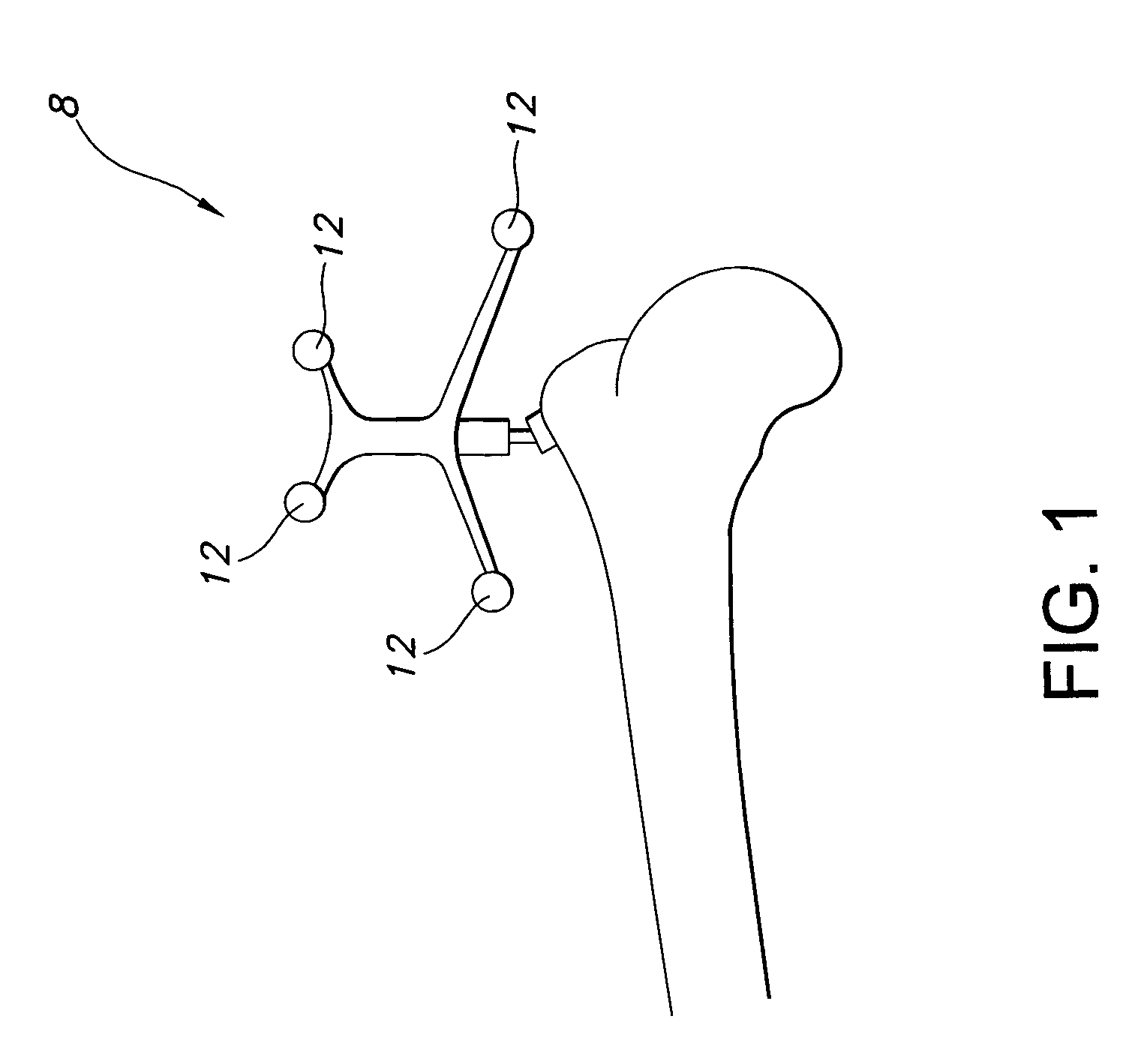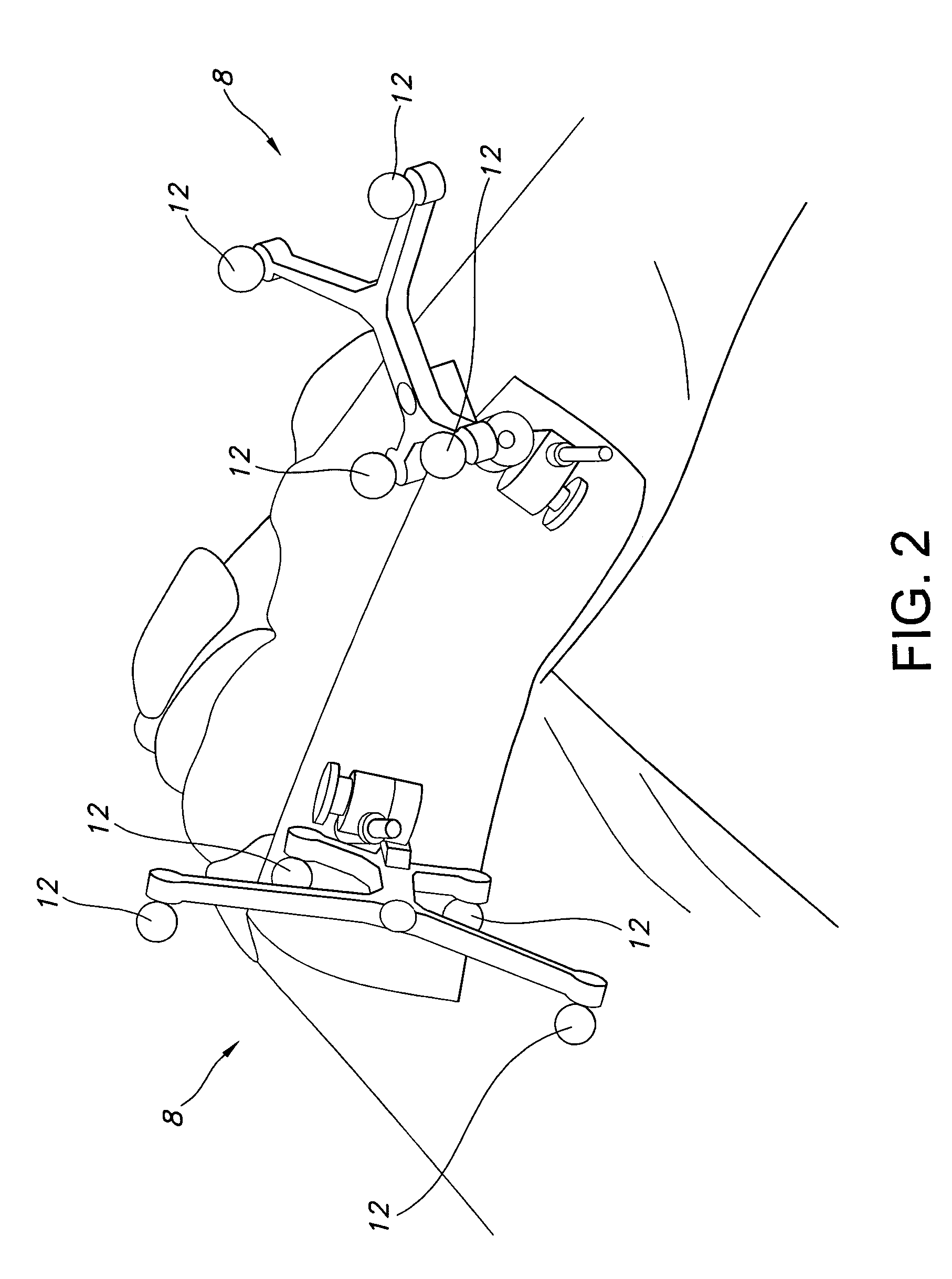Surgical positioners
a surgical and positioner technology, applied in the field of surgical positioners, can solve the problems of reducing the precision of surgical procedures, affecting the accuracy of surgical procedures, so as to improve the precision with which surgical procedures are performed, and increase surgical precision
- Summary
- Abstract
- Description
- Claims
- Application Information
AI Technical Summary
Benefits of technology
Problems solved by technology
Method used
Image
Examples
Embodiment Construction
[0069]FIG. 4 shows a platform 14 according to various aspects and embodiments of the present invention. The platform 14 may be used as a stabilizer platform by being biased against portions of an individual's anatomy to provide a stable and low profile platform for securing other items that may be useful in various surgical procedures. Items may be secured to or stabilized by stabilizer platform 14 in a releasable, rigid and / or movable manner.
[0070]Stabilizer platform 14 may be formed from any desired and suitable material and in any desired and suitable method. For instance, in some embodiments, stabilizer platform 14 may be formed from high impact, vacuum molded plastic. In other embodiments, stabilizer platform 14 may be machined from stainless steel or aluminum.
[0071]Any desired item may be supported by stabilizer platform 14. Various items that may be supported by stabilizer platform 14 include, but are not limited to, reference transmitters (such as the reference transmitter 1...
PUM
 Login to View More
Login to View More Abstract
Description
Claims
Application Information
 Login to View More
Login to View More - R&D
- Intellectual Property
- Life Sciences
- Materials
- Tech Scout
- Unparalleled Data Quality
- Higher Quality Content
- 60% Fewer Hallucinations
Browse by: Latest US Patents, China's latest patents, Technical Efficacy Thesaurus, Application Domain, Technology Topic, Popular Technical Reports.
© 2025 PatSnap. All rights reserved.Legal|Privacy policy|Modern Slavery Act Transparency Statement|Sitemap|About US| Contact US: help@patsnap.com



